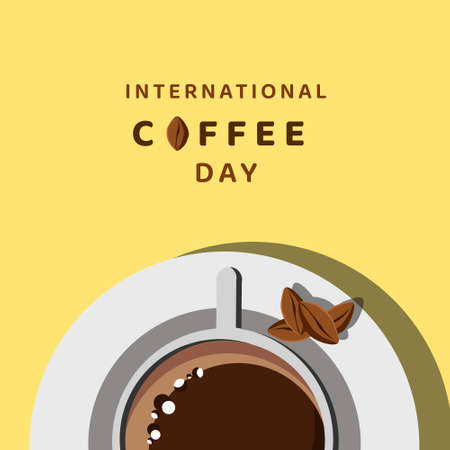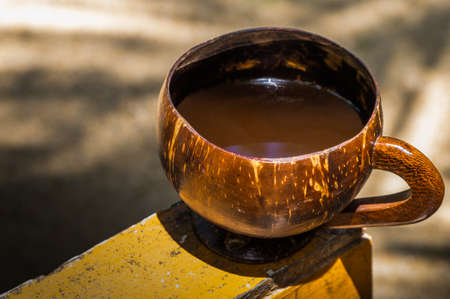Introduction to Dabra/Dabara: Unveiling the Indian Culinary Icon
When it comes to iconic symbols of Indian culinary heritage, few items are as instantly recognisable as the humble dabra or dabara. Originating from the vibrant heartlands of South India, this traditional serving vessel has woven itself into the fabric of daily life and hospitality across generations. The dabra is typically a small, shallow metal cup—often accompanied by a wider saucer called a tumbler or davara—that plays a pivotal role in the ritualistic enjoyment of filter coffee, famously known as “kaapi” in Tamil Nadu and Karnataka. Its roots can be traced back to centuries-old traditions where communal dining and sharing were central to the Indian way of life. Today, walking into any bustling street-side eatery or family home in South India, you will encounter the familiar sight of frothy coffee being aerated between dabra and tumbler—a visual that speaks volumes about its functional significance. More than just a vessel, the dabra/dabara embodies warmth, welcome, and an unspoken bond among people gathered around for food and conversation. Whether it’s a quick refreshment break at work or an elaborate family breakfast on a Sunday morning, the presence of this simple yet elegant utensil remains unmistakable in shaping moments of connection and joy.
2. Etymology and Regional Variations
The words ‘Dabra’ and ‘Dabara’ may sound similar, but their linguistic roots and cultural nuances reveal a fascinating tapestry woven across South India. These terms are deeply embedded in the everyday vocabulary of people from Tamil Nadu, Karnataka, and Andhra Pradesh, each region lending its own flavour to both pronunciation and meaning.
Tracing the Linguistic Origins
The term ‘Dabra’ or ‘Dabara’ is believed to have derived from the Tamil word “Dabara” (டபரா), which refers specifically to the small metal vessel paired with a tumbler for serving filter coffee. In Kannada, it is called “Davara” (ದವ್ರಾ), while in Telugu-speaking regions, one might hear “Dubara” (డబరా). Despite these phonetic shifts, all refer to the classic metal bowl used in tandem with a matching tumbler—a ubiquitous sight in South Indian households and roadside tea shops alike.
Regional Terminology Overview
| Region | Term Used | Local Script | Common Contexts |
|---|---|---|---|
| Tamil Nadu | Dabara / Davara | டபரா / டவாரா | Filter coffee service; family gatherings; traditional events |
| Karnataka | Davara / Dabara | ದವ್ರಾ / ಡಬರಾ | Coffee shops; home kitchens; social occasions |
| Andhra Pradesh & Telangana | Dubara / Dabrah | డబరా / డబ్రా | Tea stalls; breakfast rituals; street-side vendors |
Colloquial Usage and Dialect Influences
The local dialects add their own twist to these terms. In Chennai, for example, one may hear “dabara set” referring to the classic coffee tumbler-and-bowl pair, while in Bengaluru’s bustling markets, vendors shout “davara-coffee!” as an invitation. In Andhra towns, the word “dubara” often gets affectionately shortened to “dubbu” in casual conversation. Each variation speaks volumes about the region’s history and evolving lifestyles.
This rich tapestry of etymological diversity not only highlights linguistic adaptability but also underscores how integral these vessels are to local identity. Whether you ask for a dabara set in Tamil Nadu or a davara-tumbler in Karnataka, you’re tapping into a living tradition that transcends language—one cup at a time.

3. Dabra in Everyday Life: Tradition Meets Modernity
The dabra, or dabara as it is affectionately called in many South Indian households, is more than just a vessel—it is a symbol of hospitality, tradition, and the cherished ritual of sharing coffee. In traditional homes, especially across Tamil Nadu and Karnataka, the dabra set—consisting of a small tumbler and a wider saucer-like container—finds its pride of place on the kitchen shelf, ready to be used at every dawn and dusk.
Serving filter coffee in a dabra-tumbler ensemble is an art form passed down through generations. The act of pouring hot, aromatic filter kaapi back and forth between the tumbler and the dabra not only cools the beverage but also creates a frothy top that coffee lovers swear by. This rhythmic motion, accompanied by the clinking sound of brass or stainless steel, evokes memories of childhood mornings spent in ancestral homes—the air thick with the fragrance of freshly ground beans and the gentle hum of daily life.
In today’s urban settings, while glass mugs and ceramic cups have made their way into modern kitchens, the dabra continues to hold its ground. Many young professionals and families in cities like Bengaluru and Chennai are rediscovering the joy of using traditional vessels. For some, it is a conscious nod to their roots; for others, it offers a sensory experience unmatched by contemporary drinkware. The touch of cool metal against the lips, the visual delight of swirling froth, and the unmistakable aroma rising from the cup—all contribute to a moment steeped in nostalgia.
Even cafes and trendy restaurants are embracing this tradition by serving South Indian filter coffee in dabrasa, celebrating both authenticity and local pride. These establishments often become spaces where generations converge—elders recalling stories from their youth, while youngsters enjoy an Instagram-worthy sip of heritage.
Through these evolving practices, the dabra remains a bridge between past and present—a humble vessel that carries within it not just coffee, but also memories, warmth, and an enduring sense of belonging.
4. Craftsmanship: Materials, Design, and Local Artisans
The dabra or dabara is not just a serving vessel—it is a testament to the skills of Indian artisans and the evolving nature of handcraft traditions. The journey of these vessels begins in the bustling bazaars and small workshops across India, where generations of craftsmen have perfected their art. Traditionally, dabras were meticulously handcrafted using brass, an alloy that not only provided durability but also imparted a distinct warmth to the vessel. Over time, as market preferences shifted and affordability became a factor, stainless steel emerged as a popular alternative. While it lacks the old-world charm of brass, stainless steel offers ease of maintenance and resilience for daily use.
Handcrafted Techniques Across Regions
Each region in India brings its own flavour to dabra-making. For instance, in Tamil Nadu, artisans often use age-old spinning and hammering techniques to create seamless shapes. In Maharashtra and Karnataka, families pass down engraving patterns unique to their communities. This diversity is reflected in both form and function—some dabras are plain for everyday chai, while others are ornately decorated for special occasions.
Materials Used in Dabra/Dabara Making
| Material | Traditional Usage | Modern Adaptation | Sustainability |
|---|---|---|---|
| Brass | High; preferred for rituals and daily use in earlier times | Now seen mostly during festivals or in heritage homes | Eco-friendly; biodegradable over time; supports artisan livelihoods |
| Copper | Occasional; known for antimicrobial properties | Limited due to cost and maintenance needs | Sustainable if sourced responsibly; prized by collectors |
| Stainless Steel | Rarely used traditionally | The most common material today due to durability and low cost | Less artisanal value but recyclable; fits modern lifestyles |
| Silver/Gold-Plated | Reserved for weddings or temple offerings | Still used for high-end gifting or religious events | Sustainable but expensive; rarely mass-produced |
Bazaar Culture and Artisan Communities
The heart of dabra culture lies in India’s vibrant bazaars—from Chennai’s George Town markets to the colourful lanes of Pune and Bengaluru. Here, local artisans display their wares alongside mass-produced items. Despite competition from factory-made goods, there remains a loyal customer base that seeks handcrafted pieces for their authenticity and cultural significance. Many families still prefer buying directly from artisans at weekly haats (markets), ensuring fair prices and supporting traditional livelihoods.
Sustaining Tradition Amidst Change
The rise of urban living and changing consumer habits pose challenges for traditional dabra makers. Yet, there is growing awareness about sustainability and supporting local crafts through initiatives like “Make in India” and artisan collectives. Some contemporary designers collaborate with traditional craftsmen to create fusion pieces that appeal to younger generations while preserving age-old techniques. In this way, the humble dabra continues its journey—bridging past and present, rural skill and urban demand, one handcrafted vessel at a time.
5. Rituals and Symbolism: More Than Just a Vessel
In the vibrant tapestry of Indian culture, the Dabra—or Dabara—is much more than a humble serving vessel. It plays an essential role in rituals that span from sacred temple offerings to the heartwarming chai moments at home. The Dabra’s presence at religious ceremonies is unmistakable; during pujas, it holds holy water or prasadam, its simple form imbued with sanctity as it becomes a medium between the devotee and the divine. This vessel is equally cherished during festivals like Diwali or Pongal, where it carries sweets, milk, or payasam—its brass surface gleaming under the soft glow of oil lamps, symbolizing prosperity and purity.
But perhaps nowhere is the Dabra’s cultural symbolism more alive than in the everyday ritual of chai. In countless households across India, pouring hot tea from a steel or brass tumbler into a wide-mouthed Dabra isn’t just about cooling the beverage; it’s a gesture steeped in tradition. The act conjures memories of bustling South Indian tea shops where friends gather for “filter coffee” or families come together after a long day. In these moments, the Dabra is not merely a utensil—it is a vessel of connection, hospitality, and shared stories.
Even beyond its practical uses, gifting a Dabra is considered auspicious in many communities, especially during weddings or housewarmings. Its enduring presence across generations stands as a symbol of continuity and belonging—reminding us that in Indian culture, even the simplest objects are woven with meaning and memory.
6. Cultural Shifts: The Future of Dabra in Indian Lifestyles
As India moves forward, embracing both global trends and a return to its roots, the humble Dabra (or Dabara) finds itself at an interesting crossroads. Among younger generations, perceptions of the Dabra have shifted dramatically from being just an everyday kitchen vessel to becoming a symbol of nostalgia and cultural pride. Today’s youth, especially in urban centers like Bengaluru, Chennai, and Mumbai, are rediscovering the joy of sipping filter coffee from a brass or stainless steel dabra set—an experience their grandparents might recall with fondness.
This resurgence isn’t just limited to households. Walk into any contemporary café or boutique coffee shop that prides itself on “authentic South Indian filter coffee,” and you’re likely to be served in a polished dabra set, sometimes paired with quirky placards explaining its heritage. Young entrepreneurs are actively seeking out these vessels for their establishments, seeing them as more than just serveware; they are conversation starters and Instagram-worthy props. This trend reflects a larger movement among millennials and Gen Z Indians to reconnect with tangible aspects of their heritage—whether through food, fashion, or traditional crafts.
However, this renewed interest raises questions about authenticity versus novelty. While some purists lament the commercialization and stylization of the dabra’s image—sometimes painted in neon hues or reimagined in ceramics—the overall impact has been positive for preservation efforts. By reintroducing the dabra into daily life and popular culture, there’s hope that local artisans who manufacture these vessels will find sustainable livelihoods and that knowledge about their making won’t fade away with time.
It’s also heartening to see dabras gifted during weddings or festivals as symbols of good taste and tradition—a nod to their original role in fostering community and sharing hospitality. Social media campaigns advocating for “local first” have further propelled the dabra into the limelight, inspiring young people to take pride in using traditional serveware at home instead of imported alternatives.
Looking ahead, the future of the dabra seems intertwined with India’s evolving identity—a blend of innovation and inheritance. Whether it remains a mainstay at breakfast tables or becomes an artisanal collectible, its journey mirrors that of many Indian traditions: resilient, adaptive, and always ready to brew new memories.


